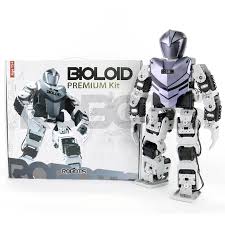
- #Webots simulation speaker pro#
- #Webots simulation speaker simulator#
- #Webots simulation speaker windows#
Note that only collisions between non-consecutive solids will be detected.įor consecutive solids, e.g., two solids attached to each other with a joint, no collision detection is performed, even if the self collision is enabled. This is useful for complex articulated robots for which the controller doesn't prevent inner collisions.Įnabling self collision is, however, likely to decrease the simulation speed, as more collisions will be generated during the simulation. SelfCollision: setting this field to TRUE will enable the detection of collisions within the robot and apply the corresponding contact forces, so that the robot limbs cannot cross each other (provided that they have a Physics node). and =./3600ĬpuConsumption: power consumption of the CPU (central processing unit) of the robot in Watts. Important: when the current energy value reaches zero, the corresponding controller process terminates and the simulated robot stops all motion.
#Webots simulation speaker simulator#
The simulator updates the first value, while the other two remain constant. The wb_robot_get_synchronization function can be used to read the value of this field from a controller program.īattery: this field should contain three values: the first one corresponds to the present energy level of the robot in Joules ( J), the second is the maximum energy the robot can hold in Joules, and the third is the energy recharge speed in Watts ( =/).

Synchronization: if the value is TRUE (default value), the simulator is synchronized with the controller if the value is FALSE, the simulator runs as fast as possible, without waiting for the controller. It may also be used as a convenience for communicating between a robot and a supervisor without implementing a Receiver / Emitter system: The supervisor can read and write in this field using the generic supervisor functions for accessing fields. It can be read from the robot controller using the wb_robot_get_custom_data function and can be written using the wb_robot_set_custom_data function.

If the robot window is required it is recommended to assign the void controller instead of an empty string.ĬontrollerArgs: string containing the arguments (separated by space characters) to be passed to the main function of the C/C++ controller program or the main method of the Java controller program.ĬustomData: this field may contain any user data, for example parameters corresponding to the configuration of the robot. Note: If the controller is not started the robot window will not work. Doing so may lead to better performance than using the void controller.

Setting this field's value to the empty string runs no controller at all.
#Webots simulation speaker windows#
The ".exe" extension is added on the Windows platforms only.

This directory is in turn located in the "controllers" subdirectory of the current project directory.įor example, if the field value is "my_controller" then the controller program should be located in "my_project/controllers/my_controller/my_controller". This program is located in a directory whose name is equal to the field's value. controller: name of the controller program that the simulator must use to control the robot.Note: Logically, if the Robot node has one or more Solid (or derived) ancestor nodes, then the physical properties of the ancestor nodes will affect the Robot node's physical behavior.
#Webots simulation speaker pro#
If you would like to build a robot with supervisor capabilities use the Supervisor node instead (Webots PRO license required). The Robot node can be used as basis for building a robot, e.g., an articulated robot, a humanoid robot, a wheeled robot. SFBool synchronization TRUE # ĭirect derived nodes: DifferentialWheels, Supervisor.


 0 kommentar(er)
0 kommentar(er)
